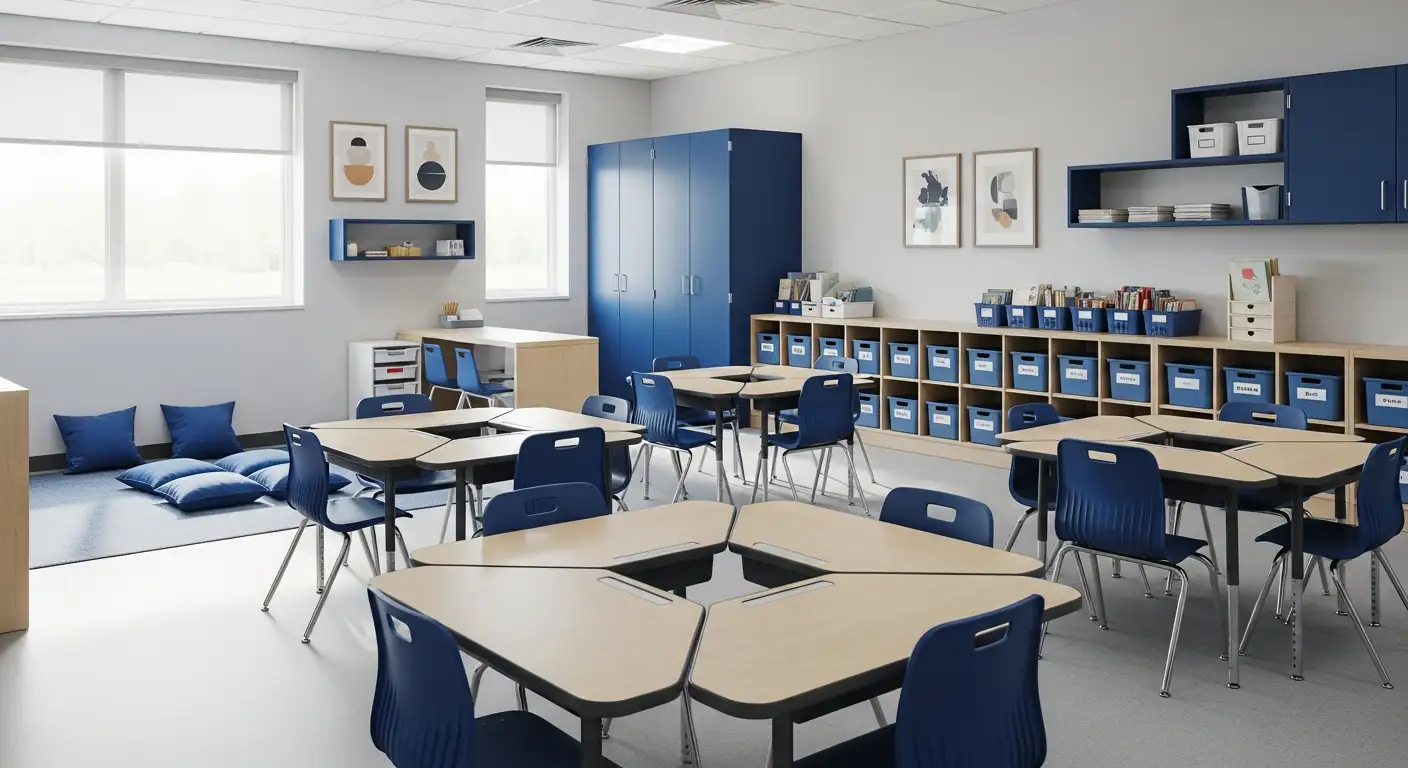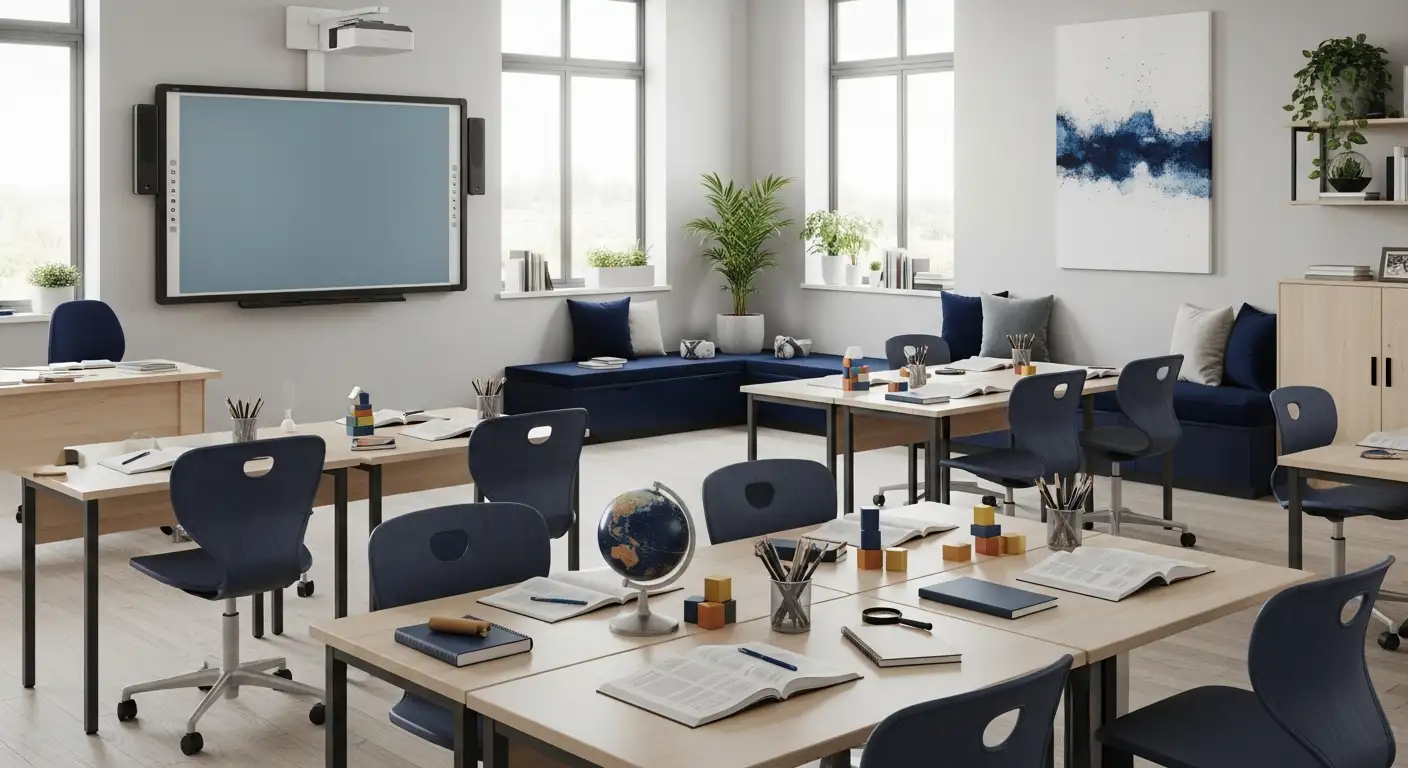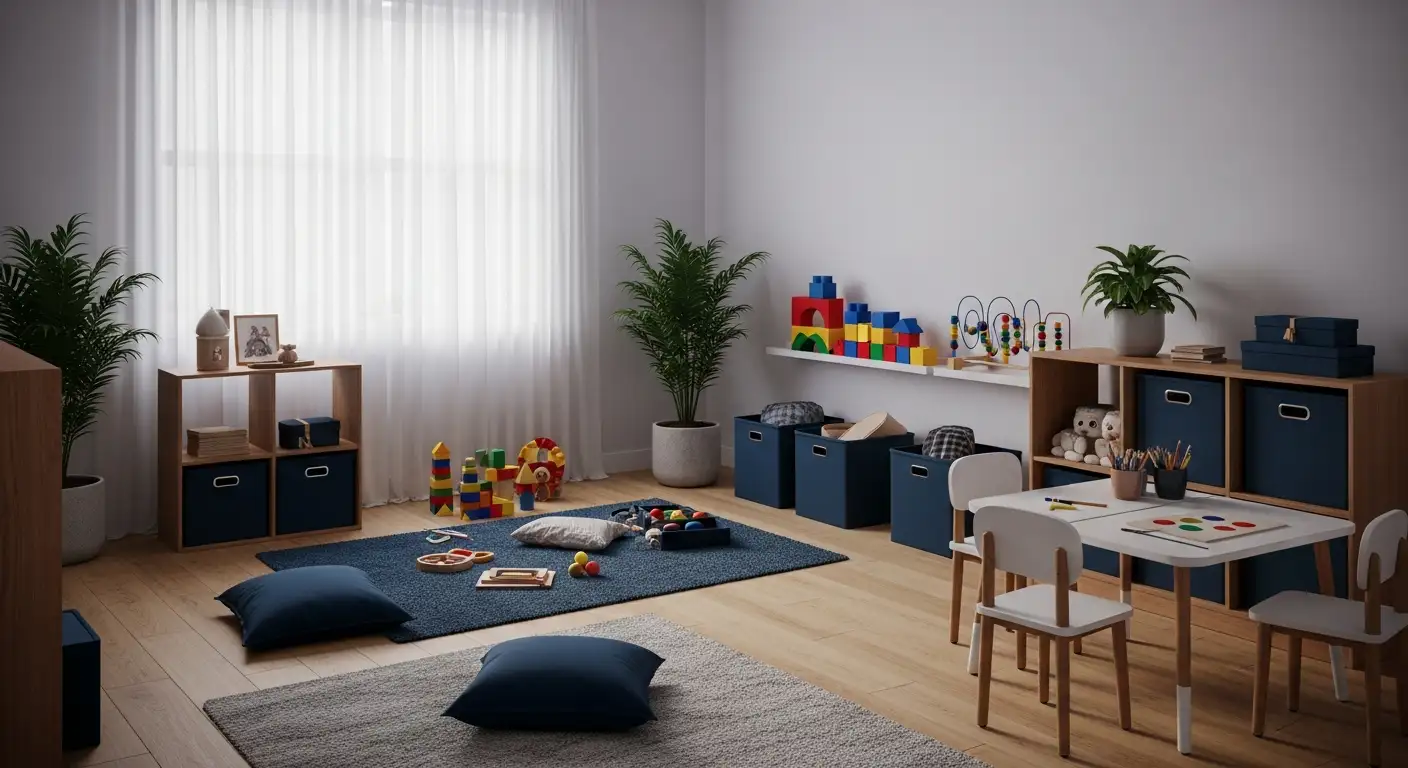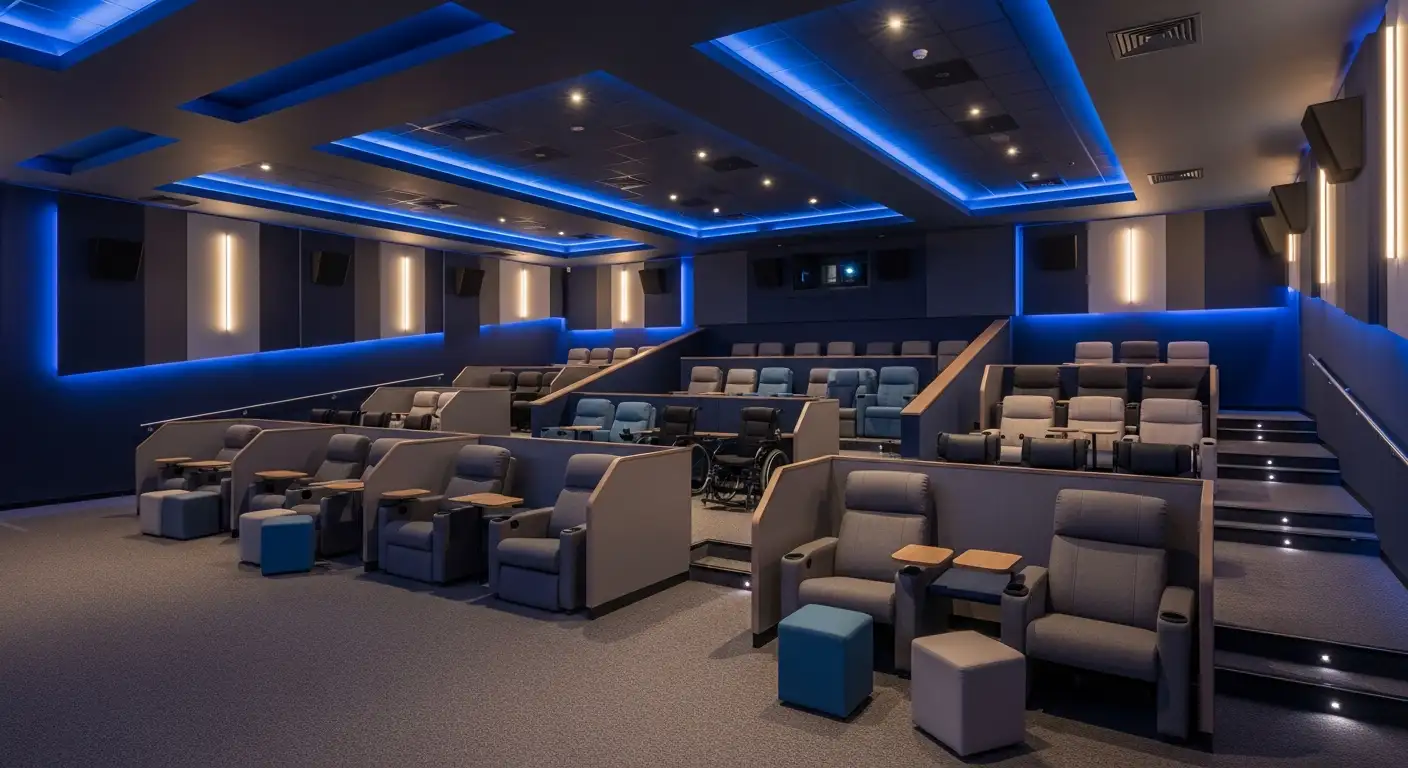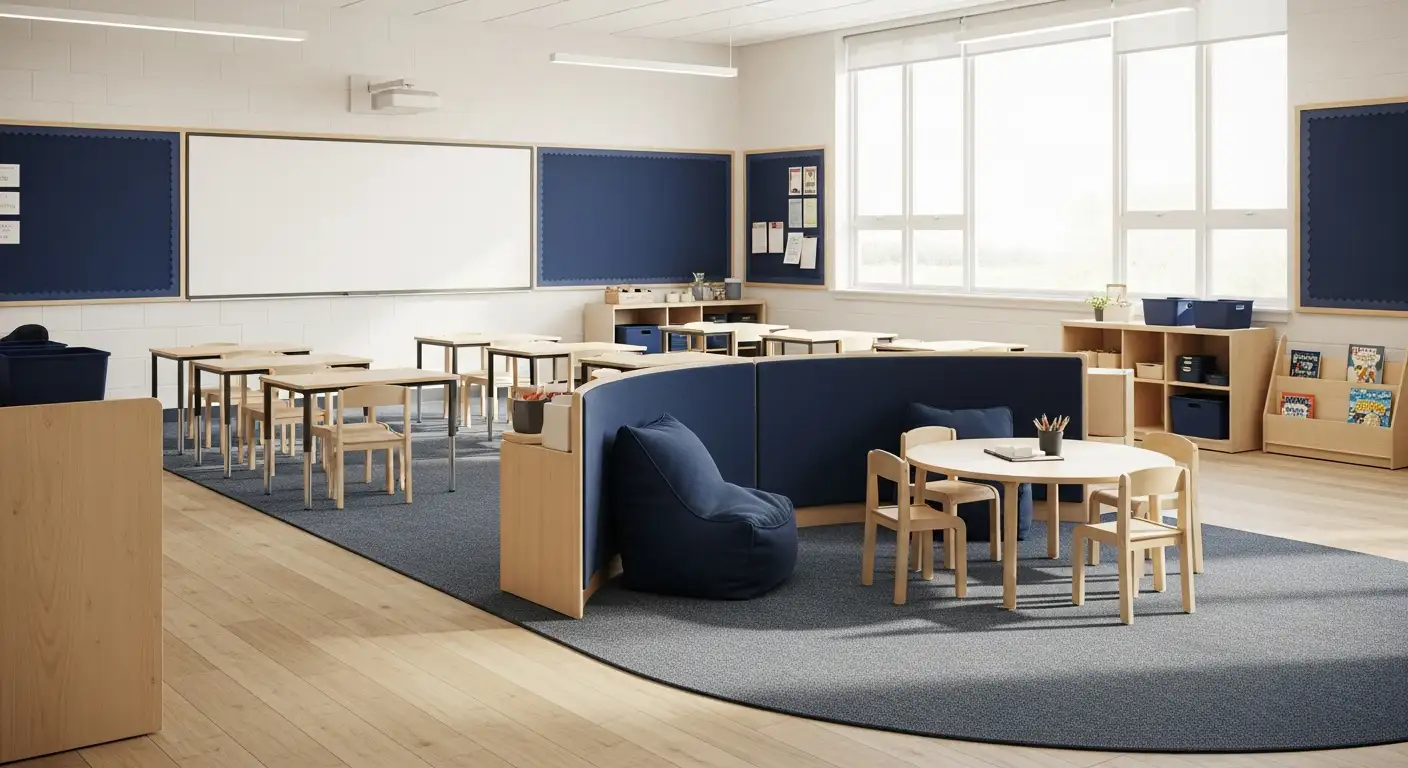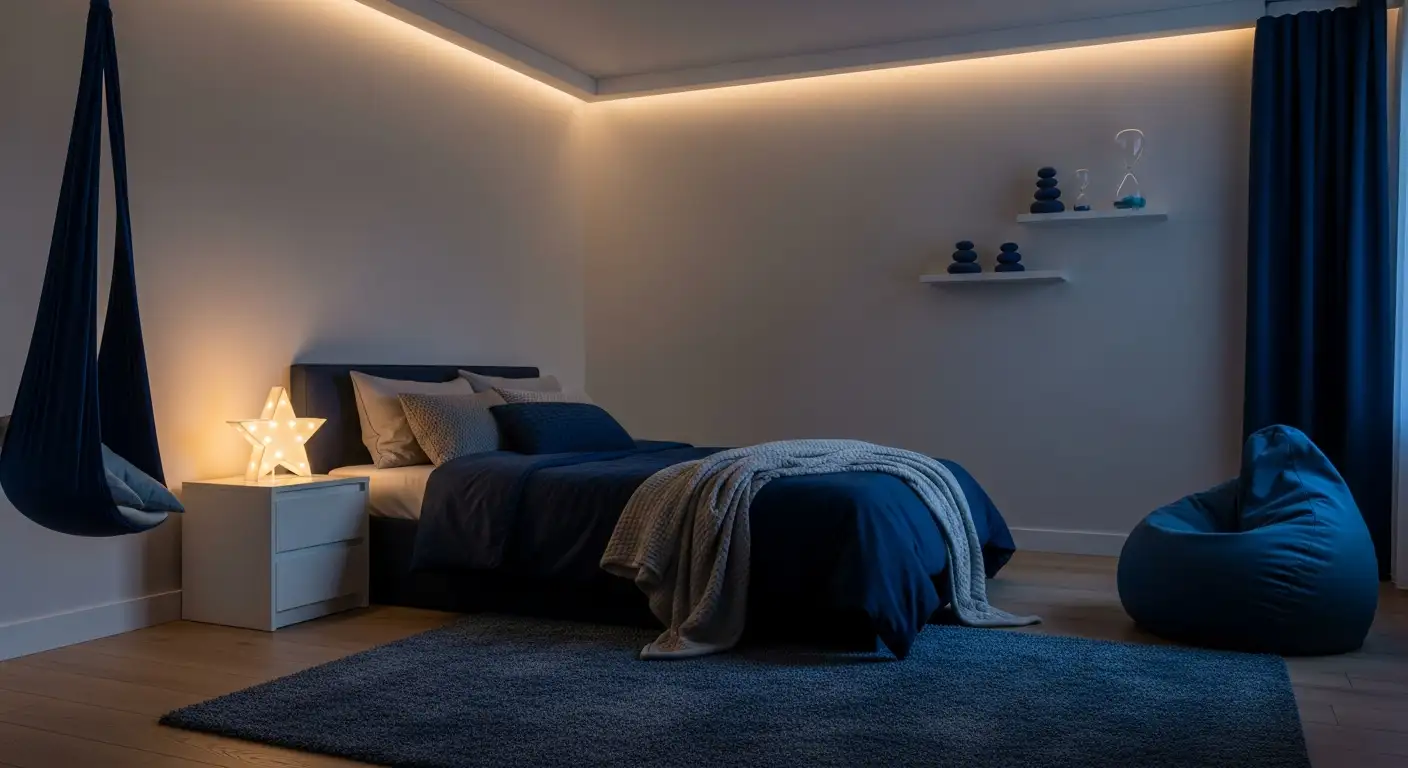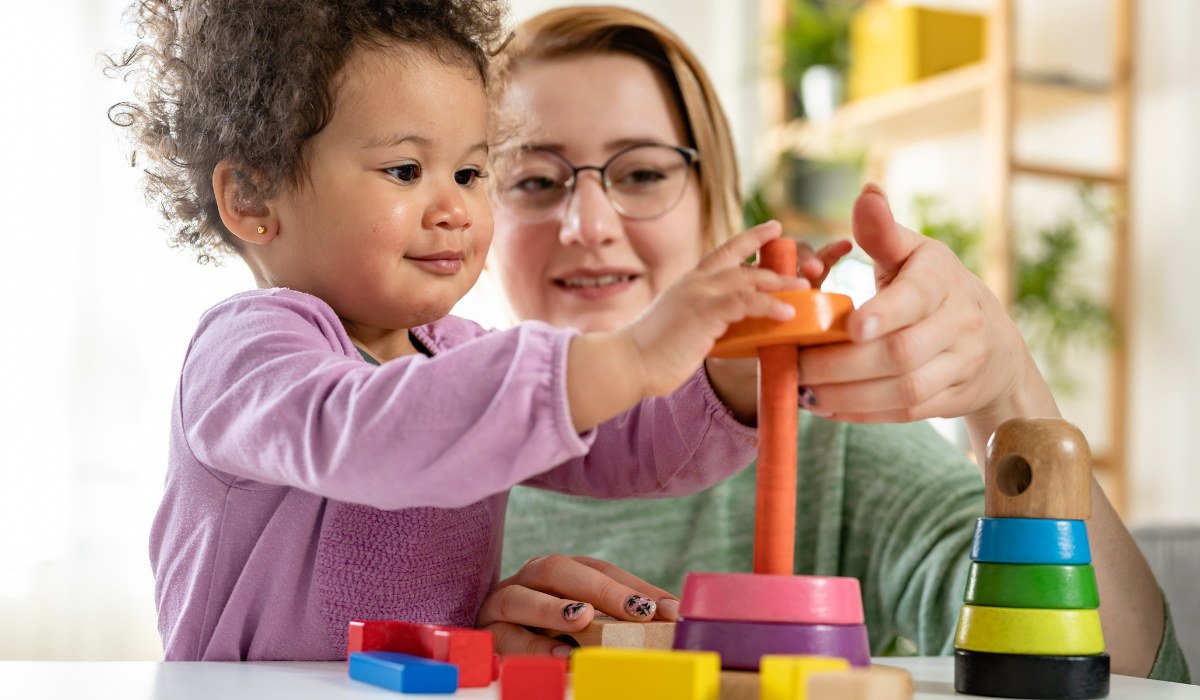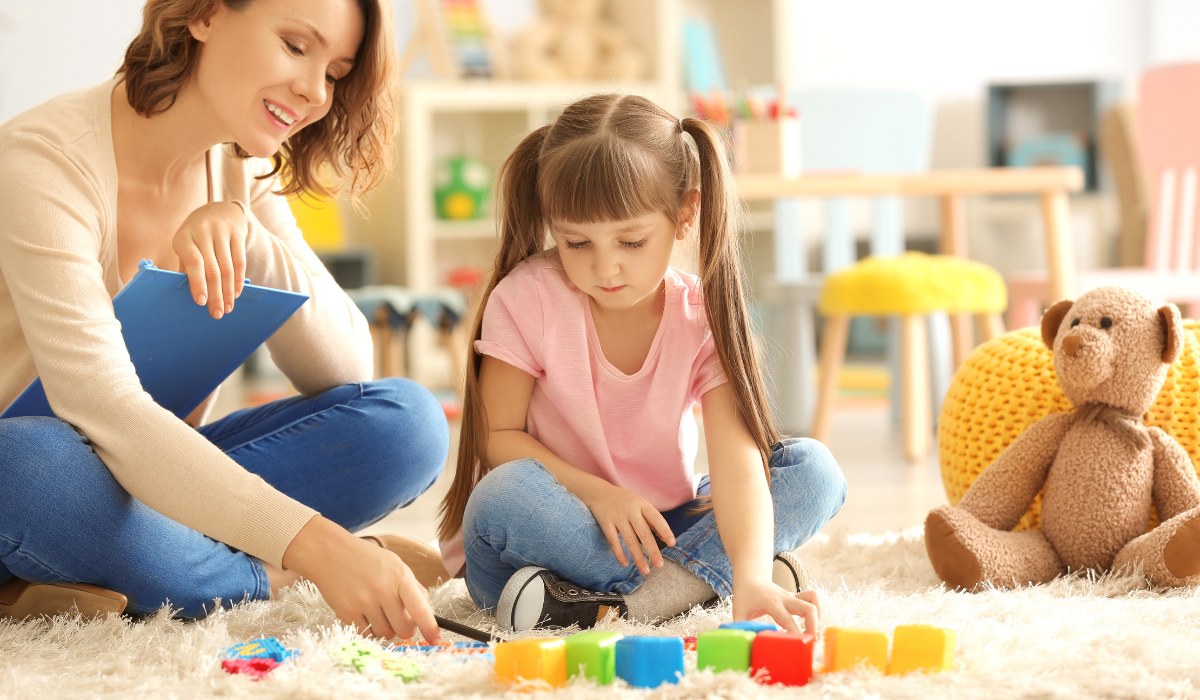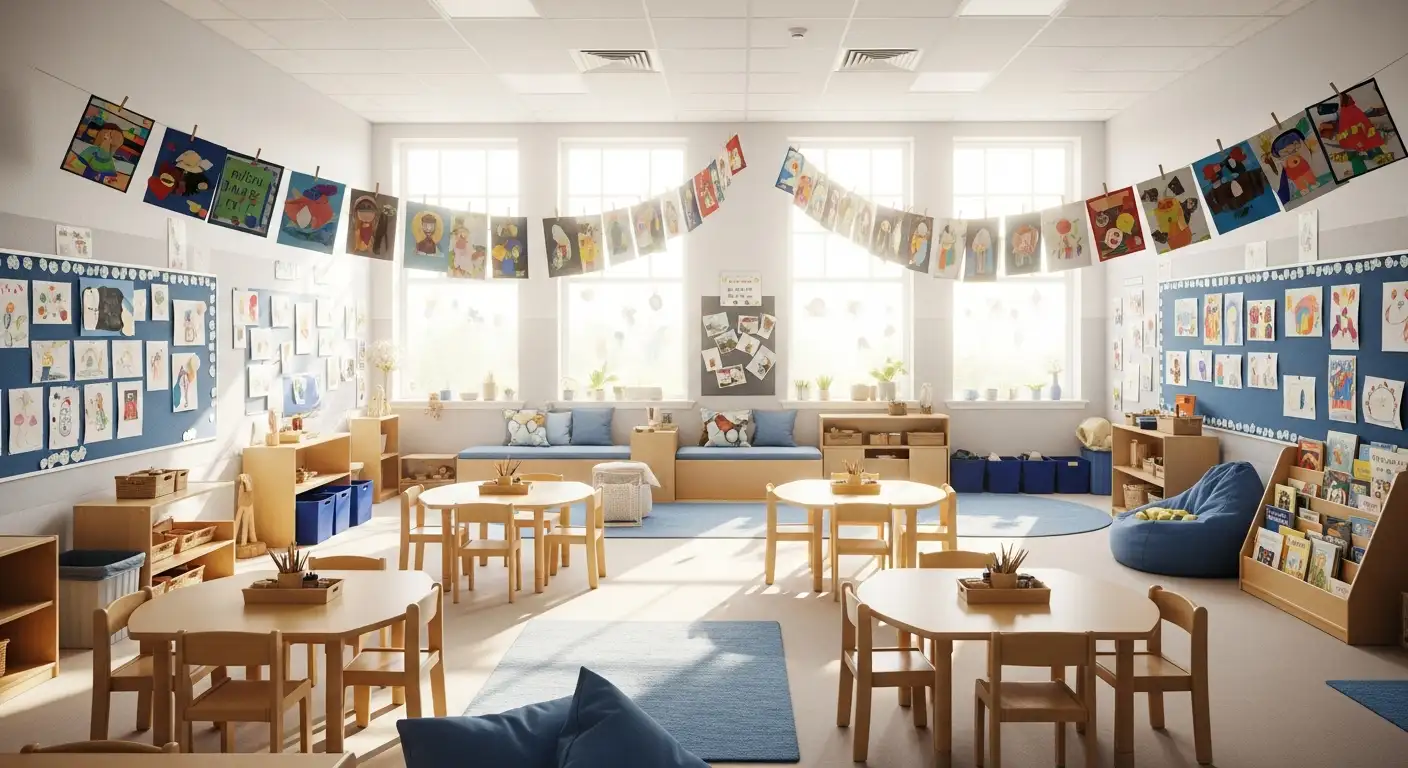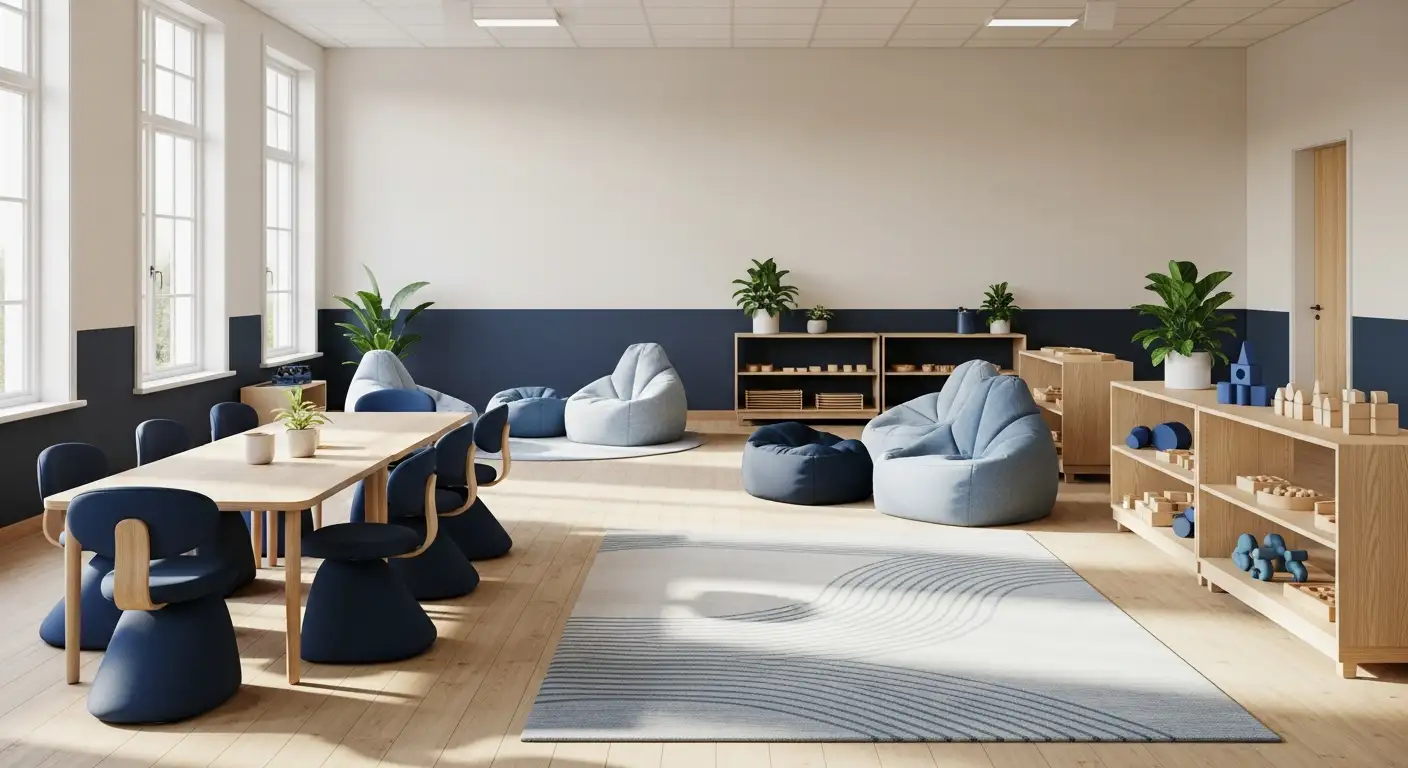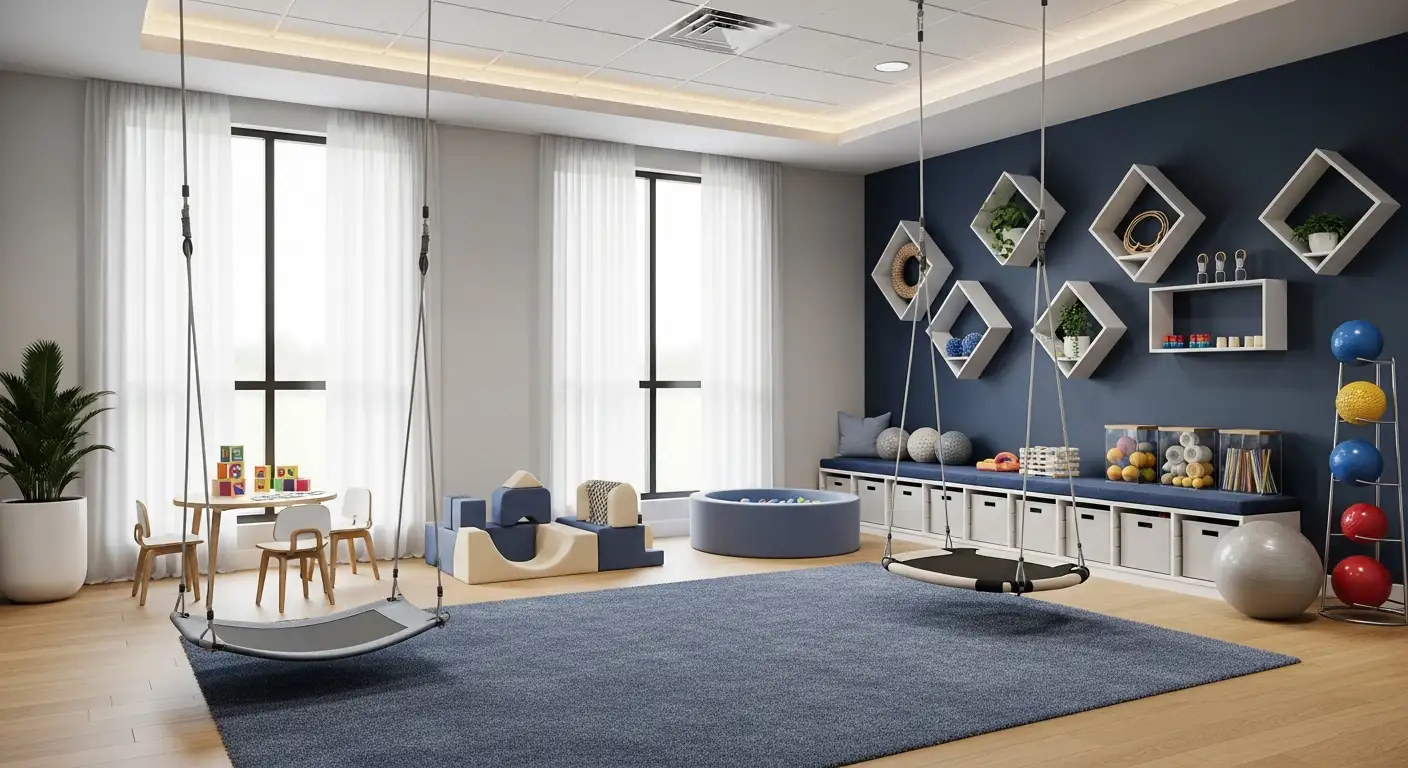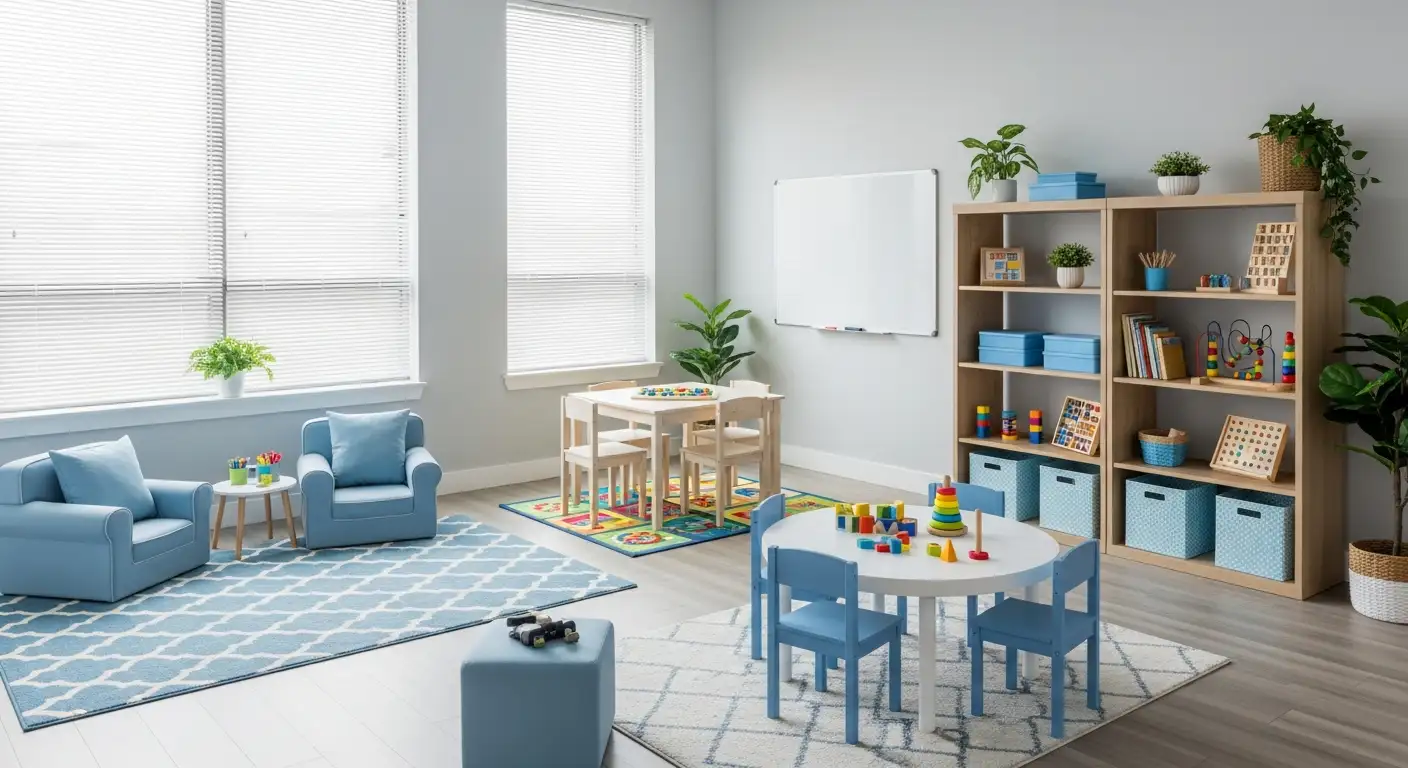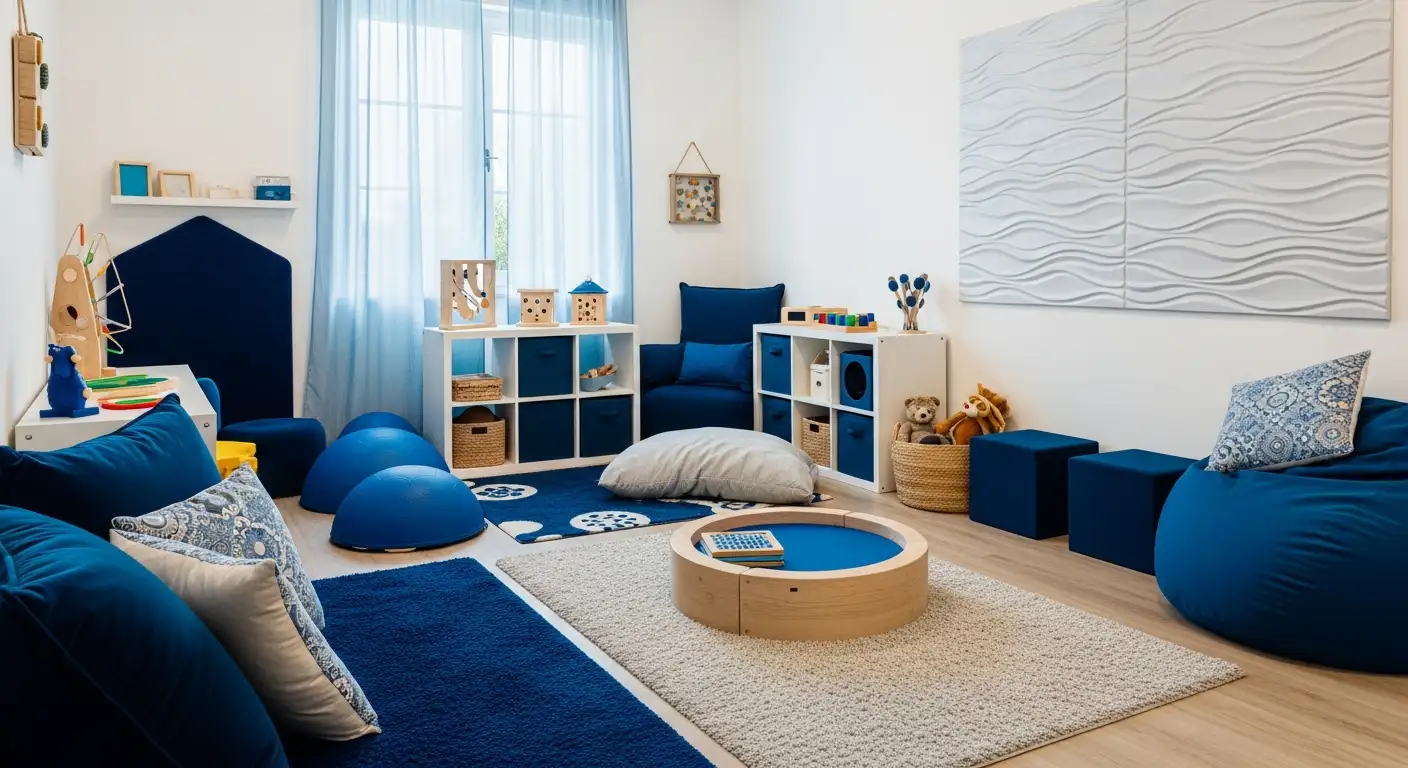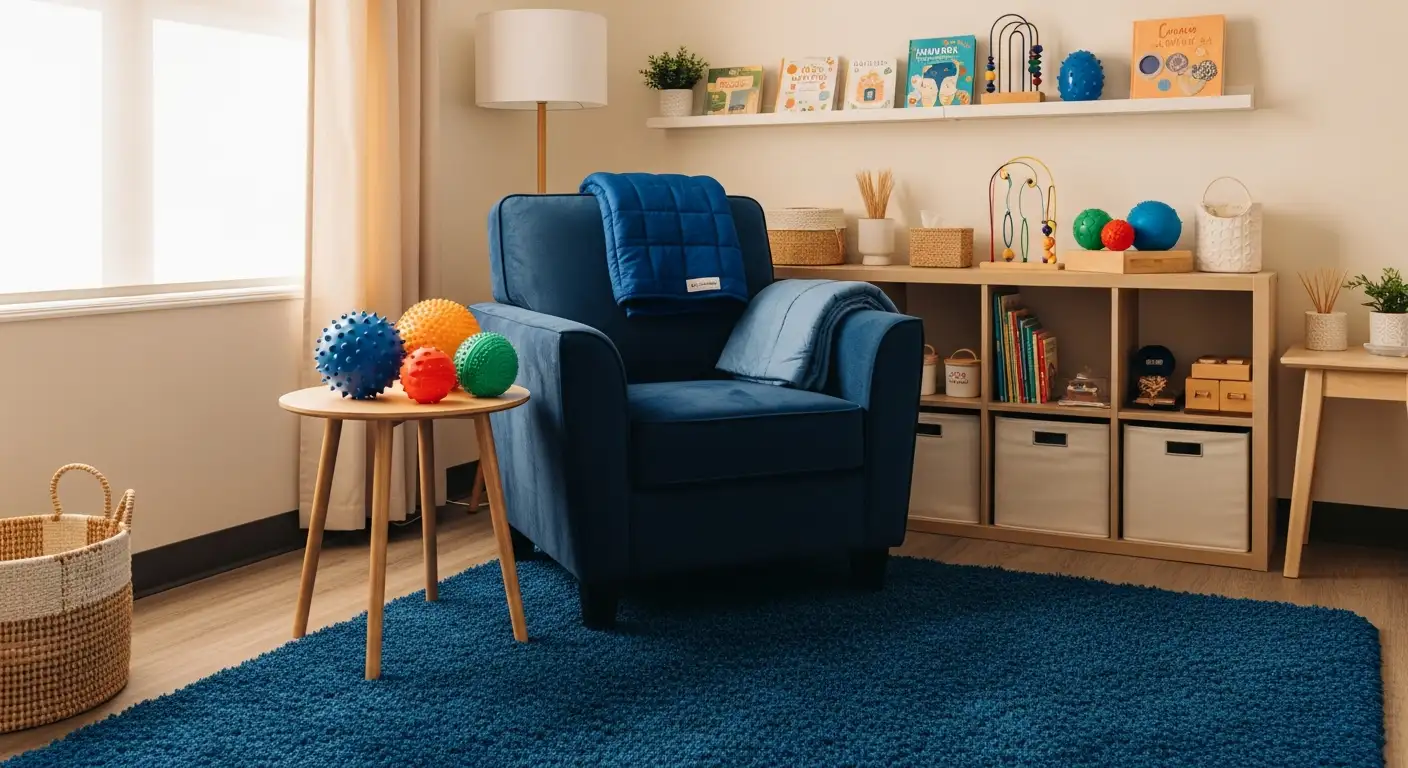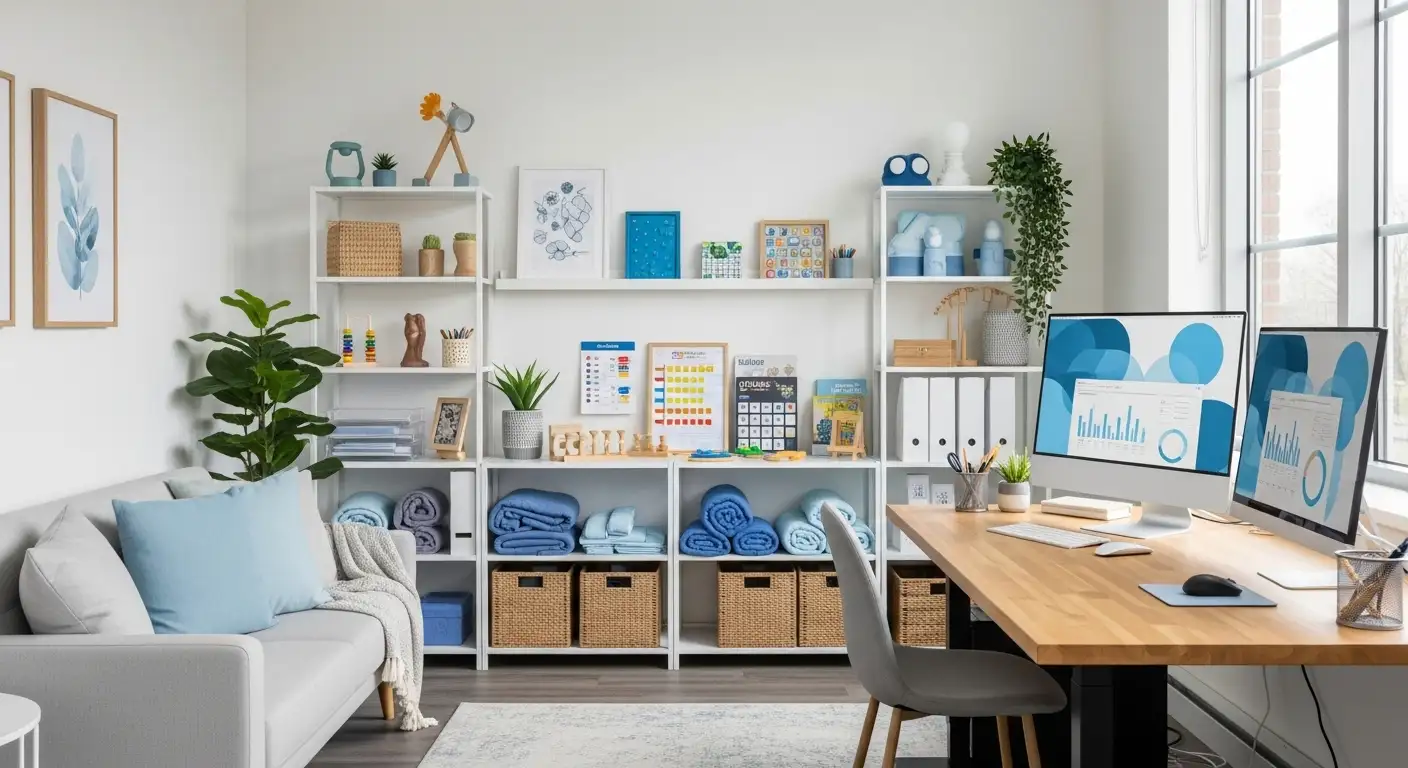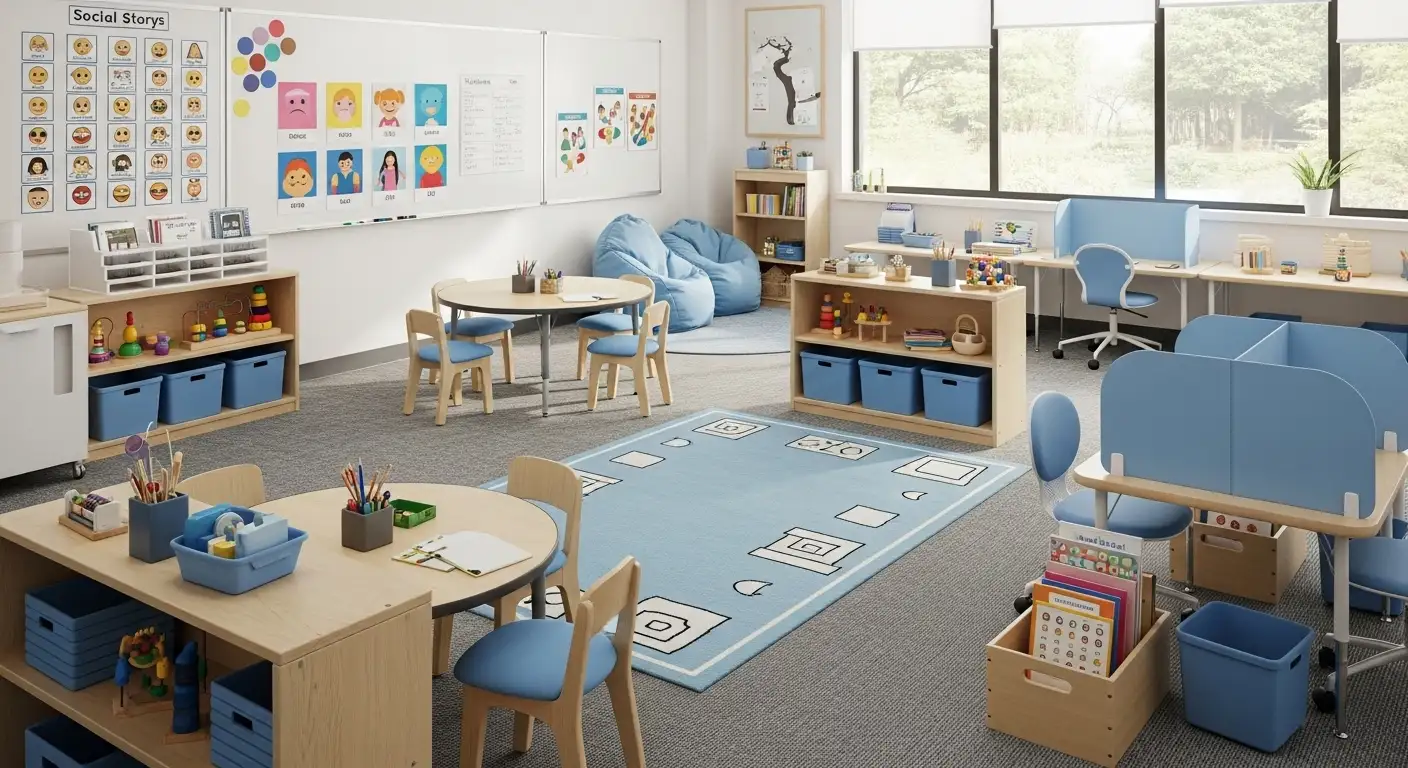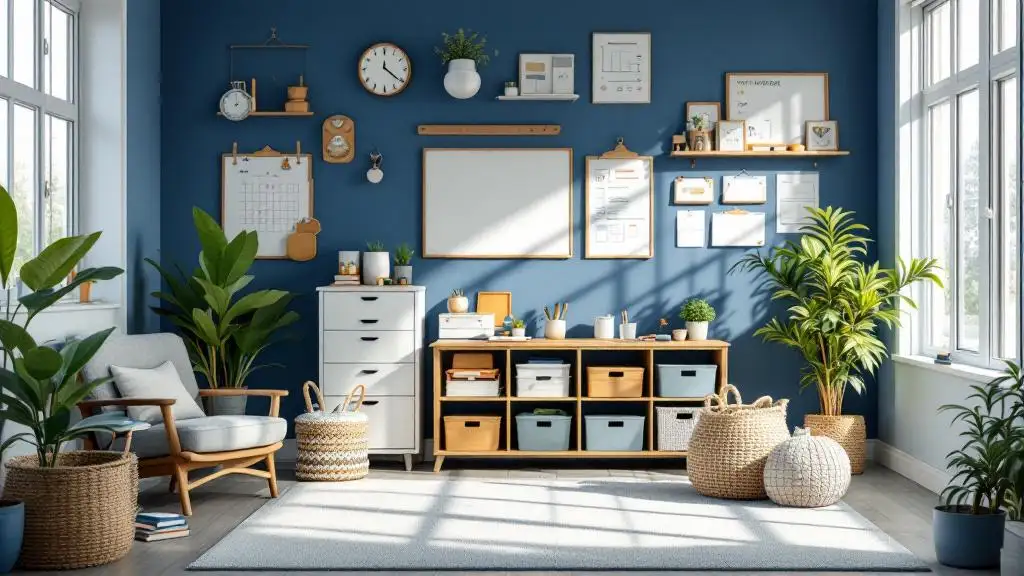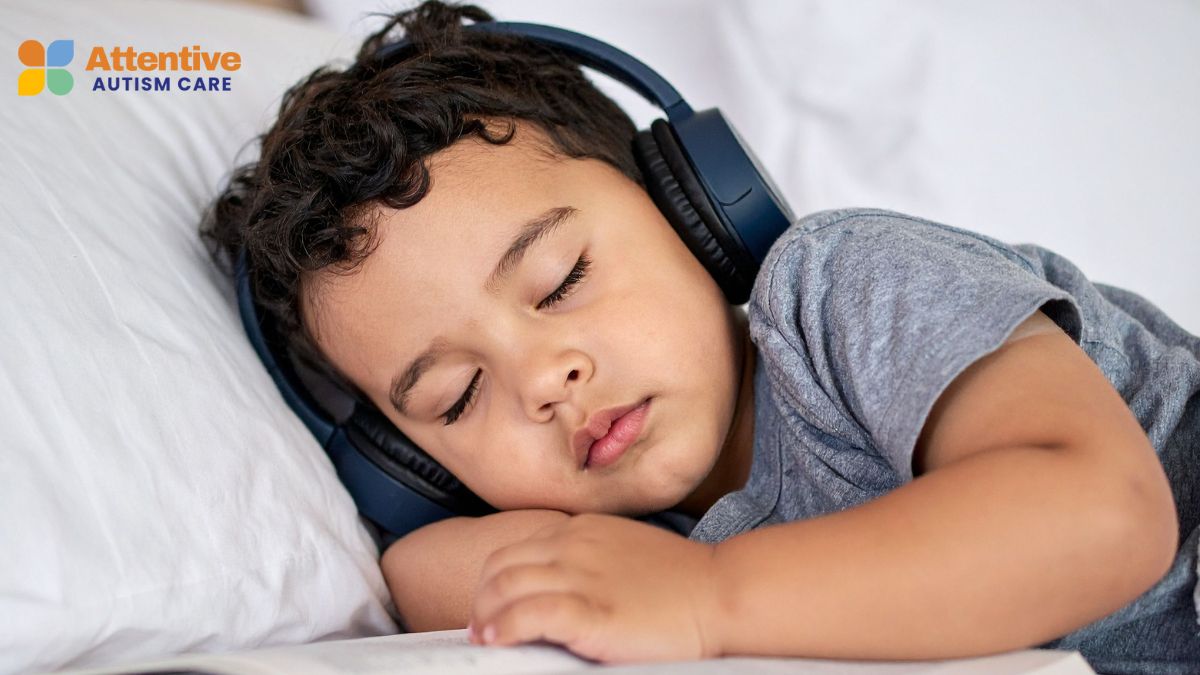Supporting Autistic Children in Managing Sensory Needs
Creating Supportive Environments for Sensory Regulation in Autism

Understanding Sensory Processing in Autism
Sensory processing differences are a core feature of autism, affecting how children respond to their environment through their senses. These differences can manifest as hypersensitivity or hyposensitivity to stimuli such as sounds, lights, textures, and smells, influencing their behavior, learning, and emotional well-being. Recognizing and supporting these sensory needs is crucial to fostering healthy development and reducing challenging behaviors.
The Four Patterns of Sensory Processing
What are the four patterns of sensory processing in children?
Children with autism and sensory processing differences often display distinct patterns in how they perceive and respond to sensory stimuli. Recognizing these patterns is essential for providing appropriate support and creating accommodating environments.
The four primary patterns are:
- Low Registration
Children exhibiting this pattern tend to have high sensory thresholds, meaning they require more intense stimuli to notice or respond to sensory input. They might appear inattentive, uninterested, or aloof because they simply don't register sensory information readily. For example, they may not respond to their name or may not notice loud noises or bright lights unless these are very intense.
- Sensory Seeking
Sensation seekers actively seek out sensory input. They often enjoy engaging in behaviors that provide strong or intense sensory experiences, such as spinning, bouncing, or touching objects repeatedly. These children may look for movement or tactile stimulation and might appear very energetic or impulsive.
- Sensory Sensitive (or Sensory Sensitivity)
Children who are sensory sensitive have a low sensory threshold, which makes them react strongly and quickly to sensory stimuli. They may become irritable, overwhelmed, or cautious even with moderate stimuli. For example, they might cover their ears at loud sounds or avoid bright lights and certain textures, showing signs of discomfort or distress.
- Sensation Avoiding (or Sensory Avoidant)
This pattern includes children who not only react strongly to sensory input but also actively avoid or withdraw from it. They may leave noisy environments, refuse certain textures, or avoid eye contact. Their responses serve as coping mechanisms to prevent overwhelming over-stimulation.
Why does understanding these patterns matter?
Knowing a child's sensory processing pattern allows caregivers, educators, and therapists to tailor strategies that help reduce sensory overload and promote engagement. For instance, children who seek sensation may benefit from sensory-rich activities, while those who are sensory sensitive or avoidant might need calmer environments and gradual exposure to stimuli.
How do these patterns impact behavior?
Each pattern influences how children participate in daily routines, social interactions, and learning. Recognizing whether a child is under-responsive or over-responsive to sensory information guides interventions that improve their comfort, emotional regulation, and overall development.
Understanding these four types can facilitate a more empathetic approach, ensuring children receive the right support to thrive in various settings.
Recognizing Sensory Processing Challenges
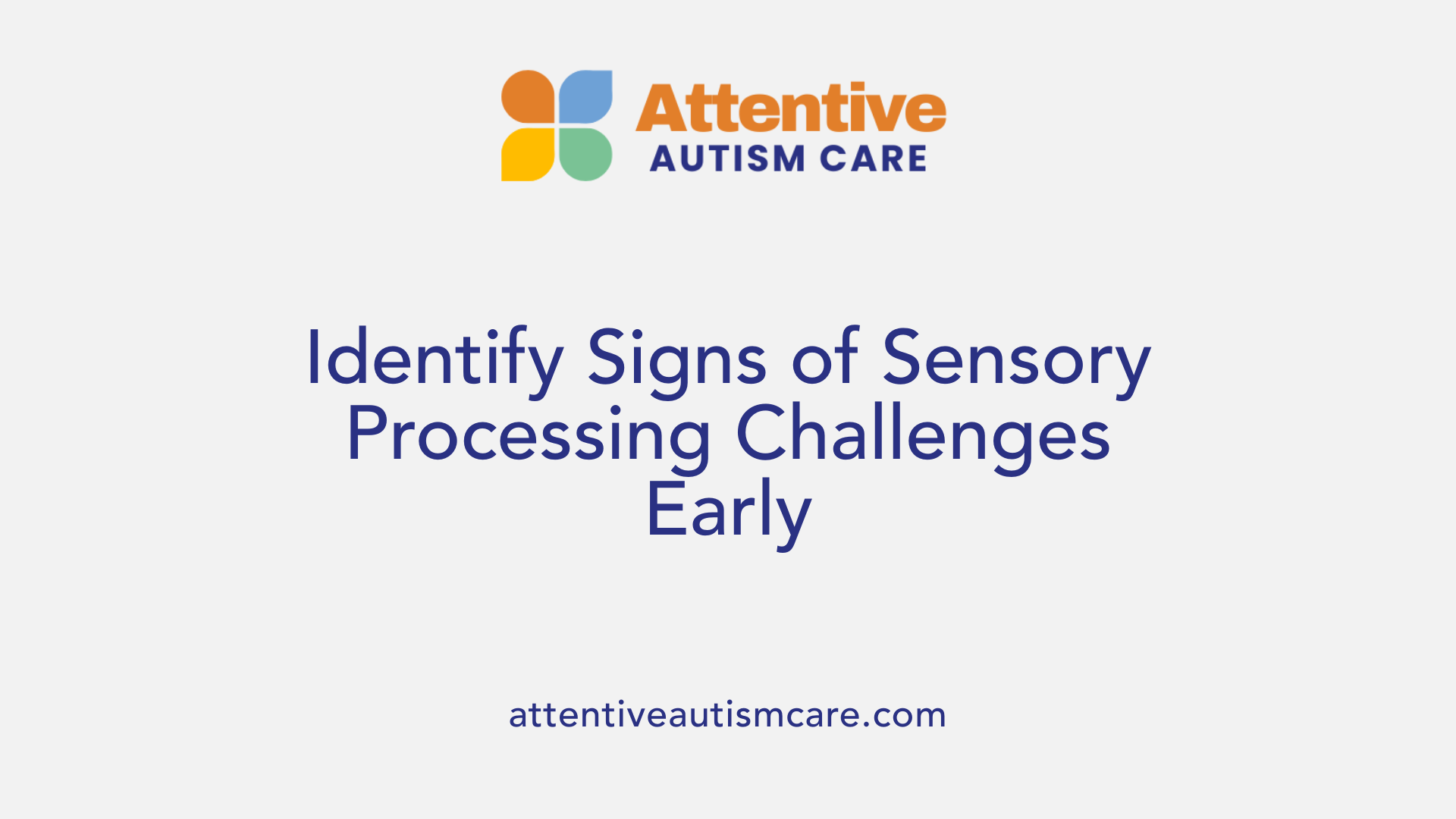
How can educators and caregivers recognize sensory processing challenges in autistic children?
Detecting sensory processing difficulties in autistic children involves careful observation of their behaviors and reactions to different sensory inputs. Common signs include children avoiding certain sights, sounds, textures, tastes, or smells that may seem ordinary to others. They might seek out specific stimuli intensely, such as spinning objects, touching certain textures repeatedly, or humming loudly.
Signs of hypersensitivity often manifest as over-reactivity, where the child appears overwhelmed or distressed by stimuli like loud noises, bright lights, or certain clothing tags. For example, a child might cover their ears, become irritable, or attempt to escape from noisy environments.
Conversely, hyposensitivity is characterized by under-responsiveness or seeking excessive input to achieve stimulation. These children may seem unaware of pain, have a high tolerance for textures that others find uncomfortable, or frequently seek movement or deep pressure like jumping or crashing into objects.
Observational strategies include noting behaviors such as flapping, spinning, avoiding eye contact, withdrawing from activity, or displaying heightened reactions to sensory triggers. Difficulty with transitions, becoming easily overwhelmed by changes in environment, or needing specific routines can also hint at sensory challenges.
Working closely with occupational therapists can help identify specific sensory profiles and tailor support strategies. Creating a sensory-friendly environment, such as reducing loud noises, dimming harsh lighting, and offering sensory tools, can further support children in managing their sensory needs. Recognizing these signs early ensures timely interventions, reducing distress and improving participation in daily activities.
Understanding and addressing sensory processing issues fosters a more inclusive setting where autistic children can thrive emotionally, socially, and academically.
Impact of Sensory Behaviors on Interactions
How can understanding sensory behaviors improve interactions with autistic children?
Recognizing and understanding sensory behaviors in autistic children is essential for fostering positive and effective interactions. Sensory sensitivities and seeking behaviors—the ways children respond to stimuli like touch, sound, light, or smell—shape how they perceive and engage with their environment. When caregivers and professionals are aware of these behaviors, they can adapt their approaches to minimize stress and prevent sensory overload.
For example, a child who is hypersensitive to loud noises might become overwhelmed or distressed in noisy settings. Knowing this, adults can modify the environment by reducing background sounds or providing noise-canceling headphones. Conversely, children who seek intense sensory input might benefit from structured activities like jumping or swinging that satisfy their sensory needs.
Understanding whether a child's behavior stems from a sensory trigger rather than intentional disobedience helps shift perspectives and responses. It encourages empathetic engagement, where adults interpret actions as communication of sensory discomfort or need. This awareness also guides the creation of sensory-friendly spaces that promote safety and comfort.
Furthermore, tailored interactions that respect sensory differences improve social communication. Becoming attuned to cues like covering ears, avoiding eye contact, or seeking tactile stimulation allows for more supportive responses. These strategies help children feel valued and understood, reducing anxiety and enhancing their willingness to engage socially.
Ultimately, a thorough understanding of sensory behaviors fosters trust and cooperation. It supports caregivers and educators in developing strategies that promote emotional regulation, positive behavior, and meaningful social interaction. Recognizing and respecting individual sensory profiles transforms challenging situations into opportunities for connection and growth.
Supporting Sensory Regulation: Practical Strategies
How can caregivers support sensory regulation in autistic children?
Caregivers play a vital role in helping children with autism manage their sensory experiences and avoid feeling overwhelmed. One effective way to do this is by incorporating sensory breaks into daily routines. These are dedicated moments where children can engage in activities like swinging, bouncing on an exercise ball, or jumping — movements that help regulate their arousal levels.
Movement activities are particularly helpful because they can either calm a hyperactive child or boost alertness for a child who is hypo-sensitive. Using tools such as wobble cushions, weighted lap pads, or chewy toys provides additional sensory input that can be calming or alerting, depending on the child's needs.
Creating a sensory-friendly environment is also essential. This might include reducing visual clutter, changing the color of paper used in the classroom, or offering early transitions to prepare children for change, which can minimize anxiety caused by sensory sensitivities.
Furthermore, sensory tools like noise-canceling headphones, sensory bottles, or fidget toys are invaluable for managing hypersensitivity to sounds, sights, and touch. Occupational therapists specialized in sensory integration can offer personalized advice and therapy plans that tailor strategies to each child's unique sensory profile.
Ultimately, supporting sensory regulation involves a combination of these approaches: movement, sensory tools, environmental modifications, and ongoing observation. When used consistently and thoughtfully, these strategies help children maintain a calm, focused state, enabling them to participate more fully in learning and social activities.
Effective Sensory Interventions and Therapies
What are effective sensory interventions for children with autism?
Children with autism often experience challenges processing sensory information, which can impact their behavior, learning, and emotional well-being. To support these children, various sensory intervention strategies are employed.
One prominent approach is Sensory Integration Therapy (SIT), developed by occupational therapists. This therapy involves active, play-based activities that engage multiple sensory systems, such as swinging, jumping, and weight-bearing exercises. The goal is to improve the child's ability to process and respond to sensory stimuli more effectively.
In addition to SIT, music therapy is frequently used to provide controlled acoustic stimuli. Engaging children with specially selected music or sounds can promote relaxation, focus, and emotional regulation. Tactile interventions, such as brushing techniques and massage, aim to desensitize hypersensitive children and improve tactile processing.
Using tools like weighted blankets, lap pads, and sensory toys, including fiddle spinners or textured objects, provides deep-pressure input that can help hypo- or hyper-responsive children achieve better sensory modulation. Vestibular stimulation activities, such as swinging or spinning, are also beneficial in regulating arousal levels.
Creating personalized sensory diets—scheduled activities designed to meet individual sensory needs—enables children to self-regulate and participate more fully in daily routines. Sometimes, environmental modifications like quiet spaces, noise-canceling headphones, and adjustable lighting are essential to reduce overwhelming stimuli.
While these interventions show promise, research indicates that evidence of their overall effectiveness varies. Some studies report benefits to motor skills, social interaction, and attention, but results are inconsistent. It is important that sensory approaches are tailored individually, combined with environmental adjustments, and integrated into comprehensive therapy plans.
Ultimately, a combination of sensory therapies, environmental adaptations, and parental or caregiver involvement can help children with autism manage sensory challenges, thereby supporting their development and participation in everyday activities.
Supporting Sensory Regulation Through Techniques
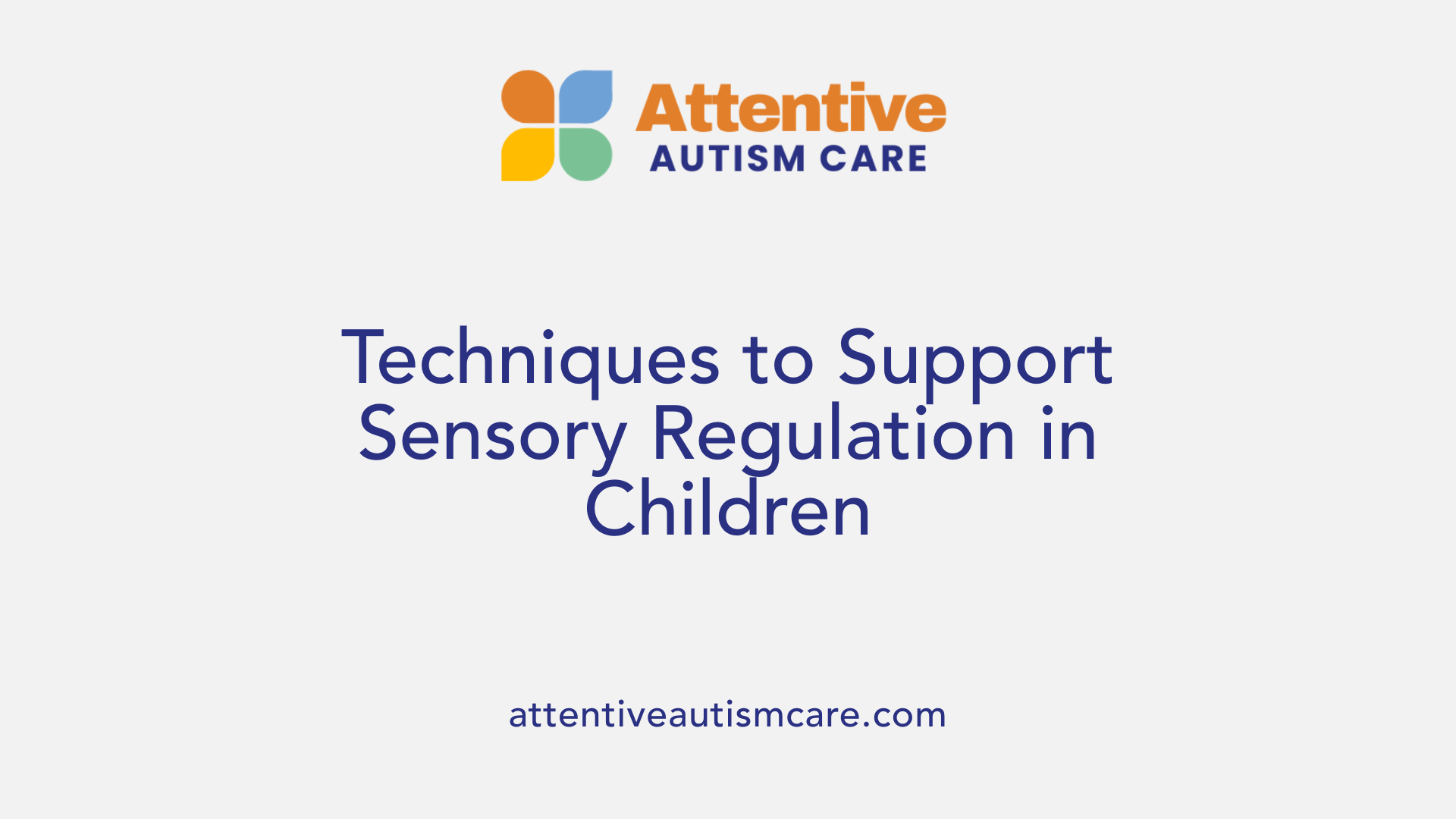
What techniques can support sensory regulation in autistic children?
Supporting children with autism in managing sensory input involves a variety of tailored strategies that help them stay balanced and engaged. One effective method is providing deep pressure and compression. Items such as weighted vests, lap pads, or massage can help organize sensory input, offering a calming effect. These techniques make children feel grounded, reducing feelings of overload.
Creating calming environments is another important aspect. Simple adjustments like playing soft, calming music, using visual displays with muted colors, or setting up quiet areas within classrooms or at home can reduce sensory stress. These spaces provide a safe haven for children to de-escalate when overwhelmed.
Movement plays a crucial role in regulation too. Incorporating regular breaks for movement, especially activities that involve vestibular input like swinging, bouncing, or jumping, supports sensory integration. Alternative seating options such as wobble cushions, therapy balls, or even inflatable chairs help children achieve better focus and emotional regulation during sitting tasks.
Utilizing sensory tools also significantly assists in managing individual sensitivities. Ear defenders or noise-canceling headphones reduce auditory overload, while personal scents using carrier oils or perfumes can mask overwhelming smells. Textured items or oral sensory tools like chew toys and crunchy snacks can satisfy tactile or oral sensory seeking behaviors.
Customized approaches, often guided by occupational therapists, are essential to effectively address each child's unique sensory profile. These tailored strategies build their capacity to self-regulate, enhance participation in activities, and improve emotional control, fostering overall development and well-being.
Managing Overload and Sensitivities

How can I help an autistic child manage sensory overload or sensitivities?
Supporting children with autism in managing sensory overload involves a combination of environmental modifications and personalized strategies. Since many autistic children experience heightened or diminished responses to sensory inputs, recognizing their specific sensitivities is crucial.
Creating a sensory-friendly environment is a vital step. This can be achieved by reducing visual clutter, using softer lighting instead of harsh fluorescent lights, and minimizing loud noises by using noise-reducing headphones or quiet zones. Eliminating strong odors and using low-scent materials can also lessen sensory triggers. For children sensitive to touch, soft clothing or weighted vests and blankets can provide comforting pressure.
Incorporating sensory breaks throughout the day allows children to reset their system. During these breaks, activities such as swinging, rocking, or using calming sensory toys help soothe overstimulated senses. Tools like chew toys, textured fidgets, or calming bottles give children appropriate outlets for sensory seeking behaviors.
It's important to observe and notice each child's cues. If a child appears overwhelmed—covering their ears, eyes, or trying to leave the environment—providing a quiet, safe space for recovery is essential. Establishing predictable routines and preparing the child for upcoming changes or activities can reduce anxiety.
Explaining what is happening in simple terms can empower children and help them understand their environment better. Gradually introducing modifications and consistently supporting their sensory needs promote a sense of safety and trust.
Professionals such as occupational therapists play a crucial role in developing tailored strategies. They assess sensory profiles and recommend specific interventions, like sensory diets, which are personalized activity plans to support regulation.
By blending environmental adjustments, sensory tools, clear communication, and professional support, caregivers and educators can significantly improve a child's ability to cope with sensory overload, leading to better emotional regulation and greater participation in daily activities.
Practical Tips for Educational Settings
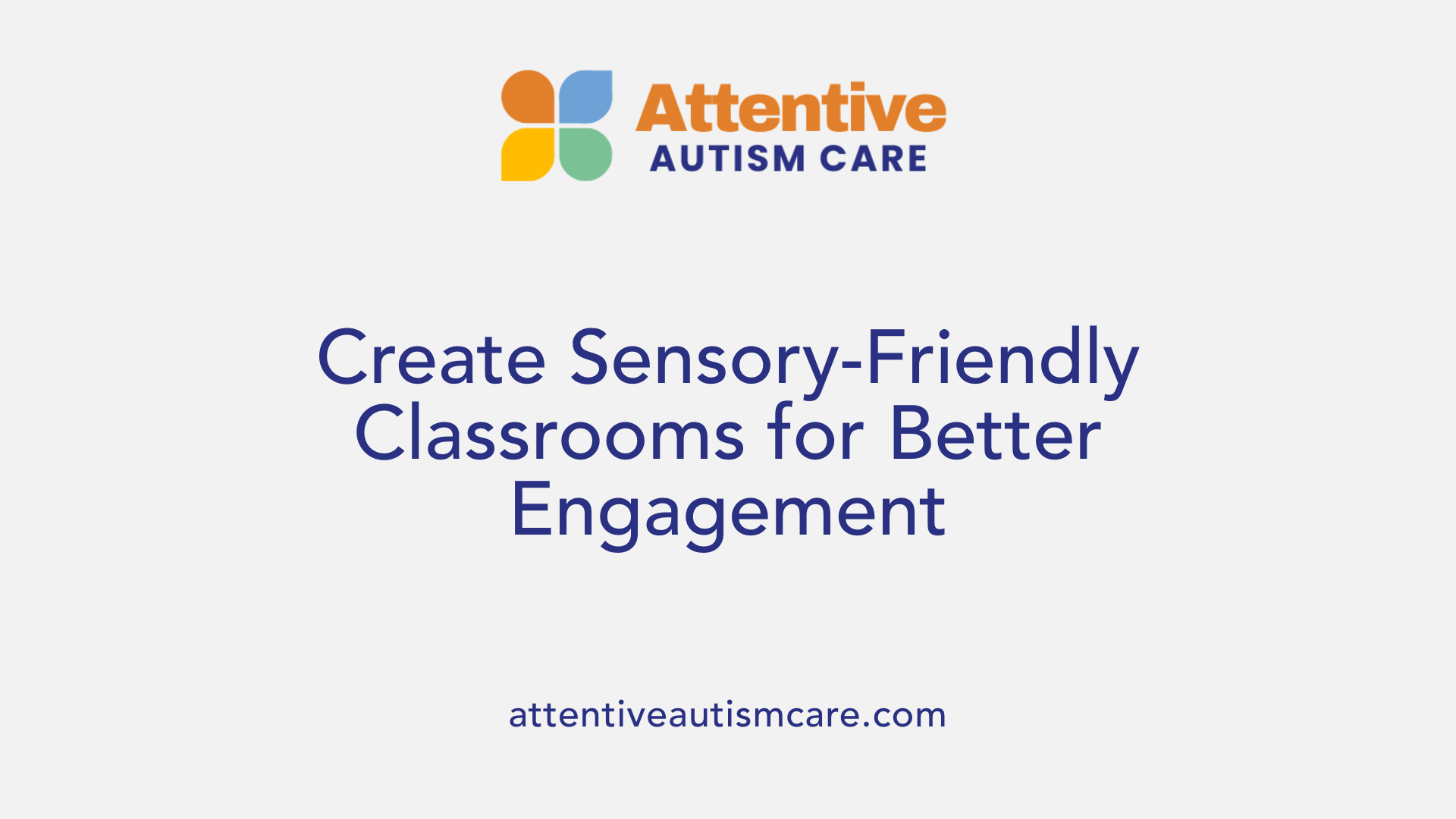
What are practical tips for managing sensory needs in educational settings?
Managing sensory needs effectively in schools involves a combination of environmental modifications, sensory tools, and strategic routines. Creating designated sensory-friendly spaces allows students to self-regulate when overwhelmed, giving them a safe zone to calm down and regain focus.
Incorporating regular sensory breaks into the school day helps prevent sensory overload and supports optimal learning. These breaks can include activities like jumping on a trampoline, using weighted blankets, or simply stepping into a quiet area for a few minutes.
Using sensory tools such as fidget toys, noise-canceling headphones, and sensory tables encourages engagement and reduces distractions. These tools can be tailored to each child's sensory profile, whether they seek sensory input or need calming strategies.
Environmental adjustments are also crucial. This includes softening lighting by using natural light or dimmable fixtures, providing alternative seating options like wobble cushions or chairs, and minimizing visual clutter and overstimulating decorations.
Classroom layout changes, such as creating clear visual boundaries and reducing noise levels, can significantly help children with heightened sensitivities.
Furthermore, training teachers on recognizing sensory needs and implementing supportive strategies ensures that interventions are consistent and effective.
Finally, maintaining active communication with families helps reinforce strategies beyond the classroom, creating a comprehensive support system for the child's sensory health.
How can sensory-friendly environments be implemented?
Implementing sensory-friendly environments involves assessing individual student sensitivities and designing spaces that cater to their needs. This can include installing calming visuals, like soft-colored walls and minimal decorations.
Providing varied seating options—such as cushions, rocking chairs, or therapy balls—allows students to choose what best helps them stay calm.
Using noise reduction measures, like carpets, acoustic panels, or headphones, can lessen auditory overstimulation.
Creating designated quiet zones or retreat corners within classrooms enables quick access when students feel overwhelmed.
Layering these modifications with ongoing teacher training and collaboration with occupational therapists ensures that the environment remains adaptable and responsive.
What role do sensory tools and activities play?
Sensory tools like fidget spinners, textured brushes, and calming bottles assist children in managing their sensory input.
Engaging in activities such as swinging, bouncing, or deep pressure exercises can help regulate arousal levels.
Employing these tools and activities regularly can build sensory resilience and support emotional regulation.
In conclusion, a thoughtfully designed sensory-friendly environment in educational settings—supported by appropriate tools and routines—can significantly improve engagement, reduce behavioral challenges, and promote a positive learning experience for children with sensory sensitivities.
Fostering a Supportive and Inclusive Environment
Supporting autistic children in managing their sensory needs involves a multifaceted approach—creating sensory-friendly environments, implementing tailored strategies, and collaborating across caregivers, educators, and professionals. Recognizing individual sensory profiles and responding empathetically can significantly improve daily functioning, reduce challenging behaviors, and promote well-being. Through ongoing observation, environmental adjustments, and the use of effective therapies and tools, we can help children navigate sensory stimuli more comfortably and confidently, paving the way for their growth and success in all areas of life.
References
- Ten simple sensory strategies for autistic children
- Interventions Targeting Sensory Challenges in Children With Autism ...
- Supporting sensory needs at school | Autism Speaks
- Supporting Sensory Needs - Autism Research Institute
- Sensory Strategies to Calm and Engage Children with Autism ...
- Managing Sensory Issues in Young Children
- Introduction - Sensory integration therapy for children with autism ...







